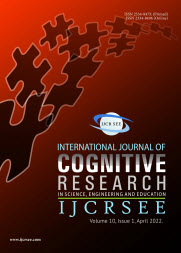Instruments of Empathy-Shaping in the Creation of a Culture of Peace and Non-Violence
Instruments of Empathy-Shaping in the Creation of a Culture of Peace and Non-Violence
Author(s): Aleksandar Filipović, Momčilo B. Bajac, Ivana SpaićSubject(s): Psychology
Published by: Удружење за развој науке, инжењерства и образовања
Keywords: empathy; endogenous and exogenous factors of empathy; family; education system; media; the culture of peace
Summary/Abstract: Empathy as a human trait that gives the ability to understand, respect, and share the feelings of other people is one of the most important elements in building a secure society and a culture of peace and non-violence. The level of empathy in individuals is influenced by endogenous and exogenous factors, and it has an affective and cognitive dimension. The aim of this paper is to investigate the concept of empathy, the extent of influence of endogenic and exogenous factors, to investigate the influence of three main elements in the development of empathy in children and youth, namely family, school, and media, and to investigate the degree of correlation between empathy and creation and maintaining a culture of peace and nonviolence. The methods used in this paper are quantitative and qualitative content analysis, comparative analysis, historical method, analogy method, and analysis of primary and secondary sources. The research confirmed the importance of empathy in the development of a culture of tolerance, dialogue, respect for opposing opinions and goals, respect for diversity, and non-violent response to conflicts. All these elements are simultaneously elements of a culture of peace and non-violence, and therefore the conclusion is that empathy is one of the preconditions for building a culture whose goal is a safer and more humane society that provides greater security from physical destruction than a culture of war and aggressive problem-solving. The authors conclude this paper with recommendations for the three main pillars of shaping empathy in children, namely family, school, and the media.
Journal: International Journal of Cognitive Research in Science, Engineering and Education (IJCRSEE)
- Issue Year: 10/2022
- Issue No: 2
- Page Range: 197-206
- Page Count: 10
- Language: English

